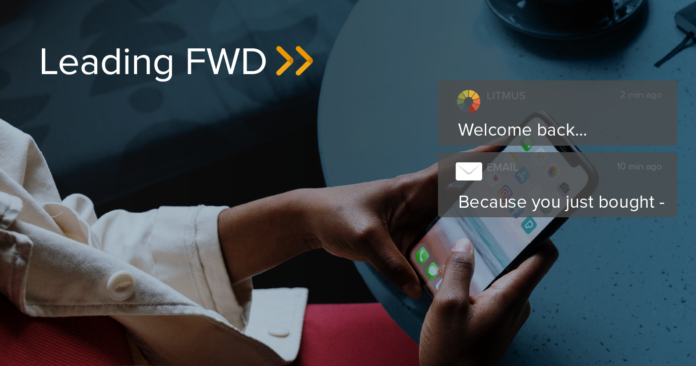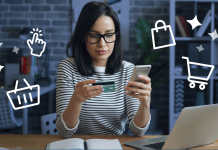Create your very own Auto Publish News/Blog Site and Earn Passive Income in Just 4 Easy Steps
In a recent Formation.ai study, respondents listed the following top three personalization strategies most likely to increase their loyalty to a brand:
- Personalized website experiences
- Marketing email
- Mobile notifications
As modern marketers, these results seemingly help us to focus our personalization programs on the marketing channels that matter most to customers.
Not. So. Fast.
In the same study, respondents also listed the exact same top three personalization strategies that are most likely to decrease their loyalty to a brand.
As a marketing leader in an email MarTech company, I’m constantly thinking about new ways to create relevant moments of engagement with our prospects, customers, and partners. I’m not alone. In Litmus’ annual State of Email survey, when asked about their priorities in 2021, marketers listed automation, personalization, and testing as their top three. What’s interesting to me is that to deliver true, personalized, one-to-one engagements with customers, marketers must effectively address all three of these areas in an accurate, systematic, and scalable way.
The personalization fine line is real. Whether your organization sells B2B or B2C, customers expect us to deliver the same relevant, personal experiences that they enjoy from Netflix, Amazon, and Spotify. An Accenture Interactive study highlights this business imperative, finding that 87% of consumers think it’s important to purchase from brands that understand the “real me.”
Imagine this scenario. You purchase a new home in the northeast just before the winter. Before moving, you head to your favorite big-box hardware store to purchase some supplies. Then, two weeks after you have moved into your new home, an email appears in your inbox with a message that says, “Welcome to your new home! Here’s a welcome kit with some tips and a coupon to help you make your new home even homier.” Then, a few weeks later just before the first snowfall, you receive an email and SMS notification from the same retailer with a promotion on snowblowers.
This example highlights what great personalization looks like. The retailer markets to you with a relevant offering at the exact moment you need it. As a consumer, experiences like this create brand love, strengthen loyalty, and forge a personal connection that keeps you coming back for more.
With such overwhelming evidence that customers want true 1:1 personalization, why are brands still failing to deliver? In short, it’s really hard. Similar to a snowflake, from a distance, the elegant personal experience above appears seamless and simple. When put under a microscope, there are thousands of data points that must be systematically and accurately triangulated upon and intelligently orchestrated on a moment-to-moment basis. It’s a highly complex process that starts with the customer journey.
Start with the customer journey
An effective personalization strategy starts with a deep understanding of the customer journey. That means every single interaction the customer has with your business. From the first time they search online for your business, to their first experience on your website, on through browsing your products, services, or content, and then placing and receiving their order. It includes any emails, texts, phone conversations, newsletters, or engagements your business has with the customer. In short, it is everything that they experience when they interact with any part of your brand. By analyzing the touchpoints in the customer journey, you are able to get a high-definition view for each customer that can help determine future buying trends, make relevant recommendations, and personalize the experience to create a 1:1 connection with your brand.
Evolve your segmentation strategy
While segmentation and personalization are often used interchangeably, effective personalization goes well beyond adding recipients’ names to marketing emails or segmenting audiences by basic demographics like gender or age. In the Formation.ai study, 75% of consumers said the marketing emails they open frequently contain their names. While being addressed by name creates a welcoming open, it misses an opportunity to connect the customer with information, products, and services that apply to them.
Many companies go beyond basic one-to-many segmentation techniques to build intelligent microsegments based on attributes like interests, past purchases, email opens, and browsing behavior. These signals are analyzed manually to make relevant cohort actions. While micro-segmentation initiatives can enable brands to better customize content, these techniques often still fall short of delivering truly personalized experiences. One reason for this is due to the manual nature of building and sending segmented communications. Brands can typically only manage a limited number of microsegments, limiting their ability to deliver true 1:1 personalization.
Get more personal with AI & ML
The promise of personalization will be fully realized when brands can quickly and easily analyze large amounts of disparate information to generate millions of personalized communications and offers—one for each customer. To more meaningfully and effectively engage with their customers, brands should employ technologies like artificial intelligence (AI) and machine learning (ML) to process the large amount of data required for 1:1 personalization.
AI extracts customer insights like motivations, enabling marketers to automate the process of collecting relevant data and targeting offers for greater engagement. Additionally, ML identifies the optimal context, like the best email offer to send to an individual customer and when to send it.
While once thought of too futuristic, AI and ML are now the most game-changing technologies in the modern marketing toolbox. In my world of email marketing, I see a growing number of customers leveraging email campaign data to predict the best timing and offers for upcoming campaigns, make better product recommendations, drive post-purchase engagement, and even, drive better performance across all of their marketing channels, including paid media.
In his new book, Post Corona: From Crisis To Opportunity, Professor Scott Galloway, says that the “pandemic’s most enduring impact will be as an accelerant.” He explains that market trends have advanced ten years in less than one year, and as a result, fast-forwarding customer behavior and expectations to the year 2030.
As modern marketers, it is our responsibility to meet customers where they are today (in 2030). The key is human-to-human engagements, giving customers experiences and communications with brands so tailored to their individual needs, interests, and motivations that they feel as though they are the only recipient. When you invest in your personalization strategy, you get more than you ever thought possible—more engagement, more conversions, more sales, and more loyal customers.
Create your very own Auto Publish News/Blog Site and Earn Passive Income in Just 4 Easy Steps







